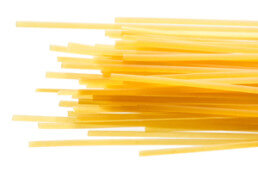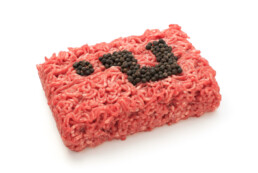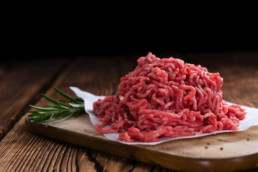How to Measure the Color of Pasta using a Konica Minolta CR-410
Measuring pasta color occurs in two stages, flour and the actual pasta product. In both cases, color can be measured with an instrument like “The CR-410 Chroma Meter”. The color value is provided in L*a*b* format, b* is the indicator of yellowness in a sample. The higher b* becomes, the more yellow the sample appears.
A method for measuring the color of semolina flour.
Semolina flour is a course, medium grade durum wheat used for making pasta among other wheat products. Semolina flour contains several different color grains. For stable color data, an instrument with a large measurement aperture size can average a diverse set of sample colors. With a sizable measurement area of 50mm, The CR-410 can cover a large area of a sample. To stabilize sample the measurement, it is important to maintain consistency in sample preparation. This means using the same sample size in the same container with the same pressure to compress the sample, etc. for every measurement.
How-to Measure Semolina Flour
The Granular-Material Attachment CR-A50 is a great way of measuring a flour sample and is what we used in the steps below
- Place a portion of semolina inside the KM Granular materials attachment so that it is even with the top of the retaining ring
- Tap to com
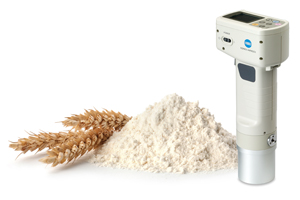 press the flour evenly
press the flour evenly - Attach the cover to the base by aligning its indices with the grooves on the collar
- Next, insert the CR 410 measuring head so that it rests on the surface
- Finally, press the “Measure” key
When done you should see measurements similar to the ones below
| Color vales for b*: Semolina Flour | |||
| Sample A | Sample B | Sample C | Sample D |
| 28.10 | 29.01 | 30.12 | 28.62 |
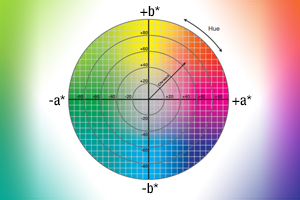 Measurement of the final product
Measurement of the final product
Another way to measure pasta color is using the actual pasta product. For example, when measuring spaghetti, the sample needs to fill its container. The surface needs to be carefully made flat so that the instrument can attach to the sample without any gaps to eliminate instability in the sample’s positioning. We recommend performing multiple measurements and averaging data for stable results.
By checking pasta, color in various production stages waste can be reduced and quality maintained.
With such a high demand for pasta color, the measurement could save you pounds of pasta a year, which means not only meeting quotas but also maximizing every dollar spent on material costs.

